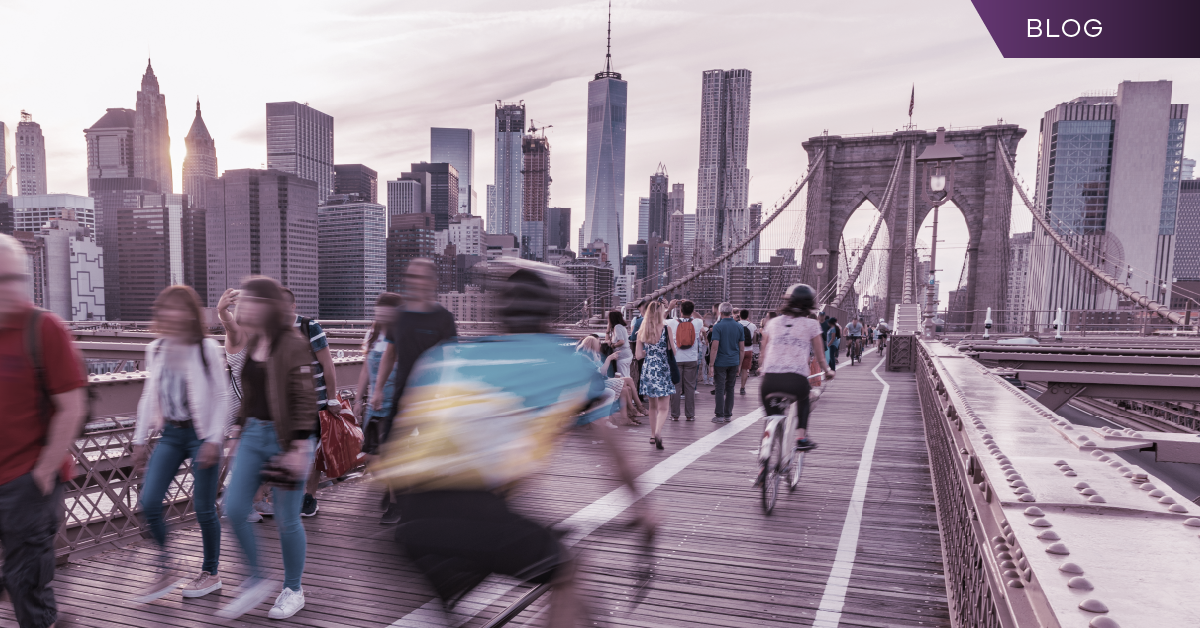Cloud computing has become essential for businesses of all sizes, offering scalability, flexibility and cost savings. However, managing cloud environments can be complex and chaotic, leading to increased costs, security risks and performance issues. In this blog post, we’ll explore the challenges of cloud computing and provide practical strategies to overcome them. Following these strategies can help you tame cloud chaos and optimize your cloud computing experience. And you’ll learn about Commvault® Cloud and how it can help you achieve cloud success.
The Cloud Computing Chaos
The cloud computing landscape is constantly evolving, with new services and providers emerging regularly. This can be a major advantage for businesses, as it gives them access to a wider range of options and the ability to scale their operations quickly and easily. However, this complexity also can lead to chaos, as businesses struggle to manage multiple cloud environments and ensure that their data and applications are secure and compliant.
One of the biggest challenges of cloud computing is the potential for data breaches and security incidents. Cloud providers are responsible for securing their infrastructure, but businesses also need to take steps to protect their own data and applications. This includes implementing strong access controls, encrypting data and monitoring for suspicious activity.
Another challenge is the potential for performance issues. Cloud providers offer different levels of service, and businesses must choose the appropriate level for their needs. This can be a complex process, considering factors such as bandwidth, latency and storage capacity.
Finally, there is the investment itself. Businesses need to carefully consider the costs of cloud services, including infrastructure, software and support. They also need to factor in the cost of migrating their data and applications to the cloud.
Despite these challenges, cloud computing offers a number of significant benefits. These benefits include increased agility, scalability and cost savings. By understanding the challenges of cloud computing and taking steps to mitigate them, businesses can harness the power of the cloud to achieve their goals.
Ransomware and the Cloud
Ransomware is a type of malware that encrypts files on a victim’s computer and then demands a ransom payment in exchange for decrypting the files. Ransomware attacks can be devastating for businesses, as they can lead to lost data, downtime and financial losses.
Ransomware attacks have become increasingly prevalent in recent years, and cloud environments aren’t immune to this threat. In fact, cloud environments can be particularly vulnerable to ransomware attacks, as they often contain large amounts of sensitive data and are accessible from anywhere in the world. It has been reported that 82% of breaches involve data stored in the cloud – public, private or multiple environments.[1]
Data fragmentation is another key reason ransomware can be hard to defend against – the more widespread your data is across multiple cloud providers, the harder it is to protect. And if you use multiple data protection tools, the complexity is only driven up. As such, more than 90% of respondents surveyed indicated a level of concern that their organization will suffer a ransomware attack – and nearly 40% indicated being extremely concerned. Practically all (97%) indicated concern about the ramifications/fallout resulting from a ransomware attack.[2]
Let’s look at how you can make sense of the chaos these challenges bring in today’s hybrid cloud world.
Stay SaaS Protected
SaaS (software as a service) applications are a popular target for ransomware attacks because they often are used to store sensitive data. There are many things that businesses can do to protect their SaaS applications from ransomware attacks, including:
- Implementing strong security measures. This includes using strong passwords, enabling two-factor authentication and keeping software up to date.
- Using a cloud-based data protection solution. This type of solution can help protect your data from ransomware attacks by providing secure storage and backup capabilities.
- Educating employees about ransomware. Make sure your employees are aware of the risks of ransomware and how to protect themselves from it.
- Implementing a security incident response plan. This plan should outline the steps that you’ll take in the event of a ransomware attack.
- Working with a cybersecurity expert. A cybersecurity expert can help you assess your risks and develop a plan to protect your business from ransomware attacks.
By taking these steps, you can help protect your business from ransomware attacks and keep your data safe. They are all proven best practices in defending against today’s threats – and tomorrow’s.
Think Hybrid First
More than likely, you have data both in a private cloud as well as one or more public clouds. Using a hybrid cloud-based approach can help businesses save money and have more control by using the right cloud environment for each task. For example, businesses can use a public cloud for workloads that require scalability and flexibility, and a private cloud for workloads that require more security and control.
Hybrid cloud allows data to move easily between clouds and on-premise environments. This gives businesses the ability to move data where they need it most. This can be especially important for businesses that have workloads that span multiple locations. Look for “any-to-any portability” when considering how to best protect your workloads.
Managing and monitoring all cloud environments in one place also can help businesses see their IT infrastructure better and work more efficiently. This can be done with a variety of tools, such as cloud management platforms and cloud monitoring tools.
Using hybrid cloud-native applications can make businesses more agile and scalable. This means they can create and launch applications that can work on different cloud platforms. This can help reduce development costs and time to market – and improve application performance and reliability.
Start Migration Planning
Data is constantly on the move – depending on how your organization’s needs change, you’ll surely need to migrate data between clouds. As a result, planning is an important part of any cloud migration project. It helps organizations to identify potential risks and challenges, and to develop a strategy for mitigating them. The following are some of the key steps involved in the planning process:
- Identify the data and applications that need to be migrated: This can be done by conducting an inventory of all of the organization’s data and applications.
- Evaluate if the data and applications can work with the chosen cloud: Working with the cloud provider to ensure that the data and applications are supported.
- Develop a migration plan: The migration plan should include:
- The order in which the data and applications will be migrated.
- The estimated time frame.
- The resources that will be required.
- The risks associated with the migration.
- Testing: Before implementing the migration plan, it’s important to test it in a non-production environment to identify any potential problems and make sure that the data and applications are migrated successfully. Ensure you’ve got access to a clean environment to do this testing, and test regularly.
- Implement the migration plan: Once implemented, the migration process should be monitored closely to ensure that there are no problems.
Consider How AI Can Help
With all these best practices being put into place, you may wonder if there is an easier way to implement them, and there is. Generative AI also extends to data protection, and Commvault was among the first to introduce this capability. Arlie – short for “Autonomous Resilience” – is our AI assistant, available 24/7 in the Commvault Cloud platform. Arlie responds to inquiries in plain, simple language, quickly consolidates information and provides users with actionable responses to help save time, respond to threats and improve cyber resiliency.
What benefits does Arlie deliver? Every cyber resilience team is stretched thin and asked to “do more with less.” With Arlie, Commvault Cloud equips users with AI capabilities that enhance their data protection experience. Arlie empowers users across all skill levels to navigate complex tasks, improving overall efficiency and cost-effectiveness. With Arlie, users can do more, faster, without the need for extensive platform knowledge, saving time on routine tasks, quickly responding to threats and enhancing their overall cyber resiliency.
Commvault Cloud: The Solution to Cloud Chaos
We’ve covered a lot here today, so you may be wondering where to start. The Commvault Cloud platform is an AI-enabled, powerful and secure cloud-based data protection solution that can help businesses of all sizes overcome the challenges of cloud computing. Commvault Cloud helps you manage your data in all your clouds and has strong security measures to help keep your data safe from unauthorized users. Additionally, it provides tools to help you save money and enhance your cloud’s performance.
Commvault Cloud’s comprehensive data protection features are deep – they include data backup, recovery, archiving and replication. Commvault Cloud also provides advanced security features such as encryption, access control and auditing. It’s also scalable and flexible, so you can easily add or remove storage as needed. It’s a great solution to the data fragmentation issue and allows you to protect your data estate under a single pane of glass.
If you are looking for a powerful and secure cloud-based data protection solution, look no further – download our buyer’s guide for more answers to your cloud chaos questions. Commvault Cloud can help you overcome the challenges of cloud computing and ensure that your data is safe, secure and accessible, no matter where it resides.


